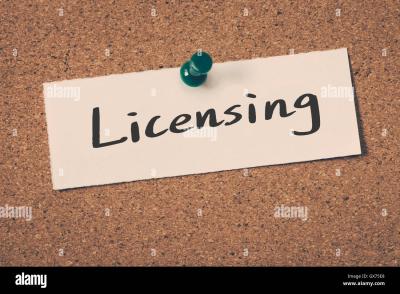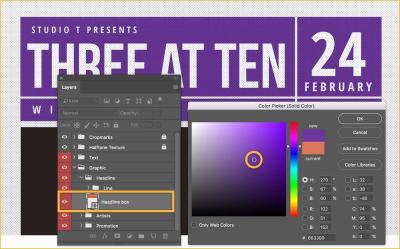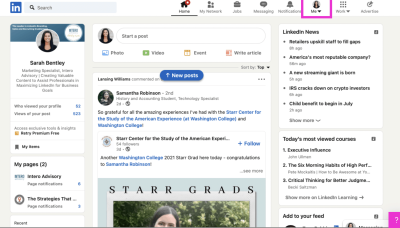Getty Images is a renowned and globally recognized stock photography agency and media company that has been at the forefront of the visual content industry for decades. Founded in 1995 by Mark Getty and Jonathan Klein, the company has played a significant role in shaping the way we access and use visual content in various forms, including photography and video.Here are some key details about
Getty Images:
- Massive Visual Content Library: Getty Images boasts an extensive collection of high-quality visual assets, including photographs, illustrations, videos, and more. These assets cover a wide range of topics, styles, and genres, making it a valuable resource for content creators, marketers, and businesses.
- Global Reach: Getty Images has a vast global network of photographers, videographers, and contributors, enabling them to capture and distribute visual content from around the world. This global reach ensures a diverse and comprehensive selection of visuals.
- Licensing and Usage: Getty Images operates on a licensing model, allowing individuals and organizations to purchase the rights to use specific visual content for various purposes, such as advertising, editorial publications, websites, and more. The licensing terms may vary depending on the intended use and duration.
- Exclusive and Premium Content: In addition to its standard collection, Getty Images offers exclusive and premium content through its various brands, such as Getty Images Premium Access and Getty Images Creative. These services cater to clients seeking unique and high-end visuals.
- Partnerships and Distribution: Getty Images has established partnerships with media outlets, creative agencies, and technology companies, facilitating the distribution of its content to a wide audience. This includes collaborations with major news agencies, making Getty Images a go-to source for current events photography.
Photographers and content creators have the opportunity to contribute their work to
Getty Images, potentially reaching a global audience and earning royalties from their licensed content. This aspect has made
Getty Images a popular choice for photographers looking to monetize their portfolios.As we delve deeper into this guide, we'll explore how photographers can benefit from
Getty Images and the considerations they should keep in mind when deciding whether to become contributors to this influential platform.
Benefits for Photographers
For photographers,
Getty Images offers a range of compelling benefits that make it an attractive platform for showcasing and monetizing their work. Here are some of the key advantages:
- Global Exposure: One of the most significant advantages of joining Getty Images as a photographer is the potential for global exposure. Your images can reach a vast and diverse audience around the world, including media outlets, advertising agencies, and businesses. This exposure can significantly boost your reputation as a photographer.
- Monetization Opportunities: Getty Images provides photographers with the opportunity to earn money from their craft. When your images are licensed for commercial use, you receive royalties or compensation based on the licensing terms. This can be a valuable source of income for both professional and amateur photographers.
- Professional Support: Getty Images offers support to its contributors, including access to resources, workshops, and expert guidance on improving your photography skills and increasing your chances of success on the platform.
- Premium Licensing: Getty Images offers premium licensing options that can result in higher payouts for photographers. Exclusive and high-demand content may be licensed at premium rates, providing an additional income stream.
- Protecting Your Work: Getty Images takes copyright and intellectual property rights seriously. When your images are on the platform, they are protected against unauthorized use, and Getty Images actively pursues copyright infringements on behalf of its contributors.
- Diverse Portfolio Opportunities: Photographers can submit a wide range of visual content, from stock photos to illustrations and videos. This diversity allows you to showcase your creativity and cater to various market niches.
- Marketing and Promotion: Getty Images invests in marketing and promoting its content, which indirectly promotes the work of its contributors. This can lead to increased visibility and opportunities for photographers.
It's important to note that while Getty Images offers numerous benefits, success on the platform requires dedication, high-quality work, and an understanding of the market. Photographers must adhere to certain standards and guidelines to ensure their images meet the platform's quality and commercial requirements.In the next sections of this guide, we will explore the potential drawbacks and challenges that photographers may encounter when working with Getty Images, as well as tips for maximizing your success on the platform.
Drawbacks for Photographers
While Getty Images offers several benefits for photographers, there are also some potential drawbacks and challenges that photographers should consider before deciding to become contributors:
- Competition: Getty Images is a highly competitive platform with a vast number of contributors. This means that your work will be in competition with a large pool of talented photographers. Standing out and gaining recognition can be challenging.
- Strict Quality Standards: Getty Images maintains strict quality standards for the content it accepts. Not all submitted images are approved, and photographers must meet these standards consistently to have their work featured and licensed.
- Commission Rates: While photographers can earn money through licensing their images, the commission rates can vary. Standard rates may start at a lower percentage, and premium licensing often provides higher payouts. Understanding the commission structure is crucial for managing revenue expectations.
- Exclusivity Requirements: Getty Images offers exclusive licensing agreements for some content, which means you can't license the same content elsewhere. This exclusivity can limit your ability to diversify your income sources by selling the same images on multiple platforms.
- Complex Licensing Terms: The licensing terms for Getty Images can be complex, and they vary depending on the specific usage and duration. Photographers need to understand these terms to make informed decisions about how their work is licensed.
- Editorial vs. Commercial: Getty Images differentiates between editorial and commercial content. Photographers must understand the distinction and ensure that their content aligns with the intended use to avoid issues with licensing and copyright.
- Market Saturation: Some photography niches may be saturated on Getty Images, making it more challenging to find a unique niche or subject matter that has not already been extensively covered.
It's essential for photographers to weigh these drawbacks against the potential benefits and consider their individual goals and circumstances. While Getty Images can provide a platform for exposure and revenue, it may not be the ideal fit for everyone.As we proceed, we'll provide tips and strategies to help photographers overcome these challenges and make the most of their experience on Getty Images.
How to Get Started
Getting started as a photographer on Getty Images involves several steps. Here's a comprehensive guide to help you begin your journey on this platform:
- Research and Preparation: Before you dive in, conduct research on Getty Images. Familiarize yourself with the types of images that perform well, the platform's licensing model, and the technical requirements for image submissions.
- Create High-Quality Work: Invest in creating high-quality images that meet Getty Images' strict quality standards. Ensure your photographs are well-composed, properly exposed, and free from any copyright violations.
- Sign Up: Visit the Getty Images contributor portal and sign up for an account. You'll need to provide personal information and agree to the platform's terms and conditions.
- Submit a Portfolio: Prepare a portfolio of your best work. Getty Images typically requires a selection of your top images for the initial submission. Follow their guidelines for image formatting and file types.
- Image Review: Once you've submitted your portfolio, your images will undergo a review process by Getty Images' team of editors. They will assess the quality, relevance, and marketability of your work.
- Acceptance and Agreement: If your images pass the review process, you will receive an acceptance notification. You'll need to sign an agreement that outlines the terms of your collaboration with Getty Images, including commission rates and licensing details.
- Upload and Metadata: After acceptance, you can start uploading more images to your Getty Images contributor account. Each image should have detailed metadata, including titles, descriptions, and keywords, to make them discoverable to potential buyers.
- Monitor Sales and Earnings: Keep track of your sales and earnings through the contributor dashboard. Getty Images provides reports on your image performance and revenue generated.
- Promote Your Portfolio: Promote your Getty Images portfolio on your own website, social media, and other online platforms to increase visibility and attract potential buyers.
- Engage with the Community: Getty Images has an active community of contributors. Engage with fellow photographers, share experiences, and learn from others to improve your success on the platform.
Remember that building a successful presence on Getty Images may take time and effort. Consistency in submitting high-quality content, understanding the market, and adapting to trends can help you maximize your potential earnings and exposure.As you continue your journey as a Getty Images contributor, you can explore premium licensing options, exclusive content, and other strategies to enhance your experience and achieve your photography goals.
Tips for Success
Achieving success as a photographer on Getty Images requires a strategic approach and continuous effort. Here are some valuable tips to help you thrive on the platform:
- Quality Matters Most: Always prioritize the quality of your work. High-quality images are more likely to get accepted and licensed. Invest in equipment, refine your skills, and pay attention to detail in your photography.
- Keyword Optimization: When adding metadata to your images, use relevant and specific keywords. Think about how potential buyers might search for your images and include those terms. This helps your images appear in search results.
- Diversify Your Portfolio: Don't limit yourself to one niche. Diversify your portfolio by capturing a variety of subjects, styles, and concepts. This widens your audience and increases your chances of sales.
- Follow Trends: Stay up-to-date with photography and design trends. Creating images that align with current trends can make your portfolio more appealing to buyers and media outlets.
- Upload Regularly: Consistency is key. Regularly upload new content to keep your portfolio fresh and engage with buyers over time. A stagnant portfolio may not perform as well.
- Research the Market: Keep an eye on what's in demand. Research popular topics and subjects to understand market trends and buyer preferences. This can guide your content creation efforts.
- Engage with the Community: Participate in discussions and forums within the Getty Images contributor community. Share experiences, ask questions, and learn from others. Networking can provide valuable insights and support.
- Promote Your Portfolio: Actively promote your Getty Images portfolio on your personal website, social media, and photography-related platforms. Building your personal brand can attract more buyers.
- Understand Licensing: Familiarize yourself with the different licensing options available on Getty Images. This includes understanding the rights granted to buyers and the potential uses of your images.
- Consider Exclusive Content: Explore exclusive content options if you're willing to commit to Getty Images exclusively. Exclusive content often commands higher licensing fees.
Success on Getty Images is not guaranteed, and it may take time to build a steady stream of income. It's important to be patient, persistent, and open to learning and adapting as you navigate the platform. Continuously improving your photography skills and staying connected with industry trends will contribute to your long-term success.Remember that Getty Images can be a valuable platform for photographers to showcase their work to a global audience and earn income from their passion.
FAQ
Here are some frequently asked questions about Getty Images and its role for photographers:
1. What is Getty Images?Getty Images is a prominent stock photography agency and media company that offers a vast collection of visual content, including photographs, illustrations, and videos. It serves as a platform for photographers to license and monetize their work.
2. How can I become a contributor to Getty Images?To become a contributor, you can sign up on the Getty Images contributor portal. You'll need to submit a portfolio of your best work for review. If accepted, you can start uploading images to your contributor account.
3. What types of images should I submit to Getty Images?Getty Images accepts a wide range of visual content, including stock photos, illustrations, and videos. It's essential to submit high-quality and commercially viable images that meet their guidelines and quality standards.
4. How do I earn money on Getty Images?You can earn money when your images are licensed by buyers. Getty Images offers various licensing options, and you receive royalties based on the licensing terms. The more your images are licensed, the more you can earn.
5. What are the licensing terms for Getty Images?Licensing terms can vary depending on the intended use and duration. They include factors like editorial or commercial use, image size, and geographical distribution. It's crucial to understand the specific terms when licensing your images.
6. Can I submit the same images to other platforms?Getty Images offers exclusive content options that require exclusivity, meaning you cannot license the same content elsewhere. However, you can choose non-exclusive licensing for some images, allowing you to sell them on other platforms.
7. How do I protect my images from copyright infringement on Getty Images?Getty Images actively monitors and enforces copyright protection for contributors. If you suspect copyright infringement of your work, you can report it to Getty Images, and they will take appropriate action to address the issue.
8. What tips can help me succeed on Getty Images?To succeed, focus on creating high-quality content, optimizing keywords and metadata, diversifying your portfolio, and staying informed about market trends. Engaging with the Getty Images contributor community and promoting your portfolio can also boost your success.
9. Is Getty Images suitable for both professional and amateur photographers?Yes, Getty Images can be suitable for photographers at various skill levels. Professionals can monetize their portfolios, while amateurs can gain exposure and potentially earn income from their work.
10. How can I track my sales and earnings on Getty Images?You can monitor your sales and earnings through the contributor dashboard provided by Getty Images. The dashboard offers insights into your image performance and revenue generated.
Conclusion
In conclusion, Getty Images can be a valuable platform for photographers looking to showcase their work to a global audience and earn income from their passion. Throughout this comprehensive guide, we've explored the various facets of Getty Images, including its benefits, drawbacks, and how to get started successfully.Getty Images offers photographers the opportunity for:
- Global Exposure: The chance to reach a vast and diverse audience of potential buyers.
- Monetization: A source of income through image licensing and royalties.
- Support and Resources: Access to professional support, resources, and a vibrant contributor community.
- Premium Licensing: Opportunities for higher earnings through premium content.
- Protection of Intellectual Property: Assurance that your work is protected against copyright violations.
However, photographers should also be aware of the competition, quality standards, and licensing complexities associated with the platform. Success on Getty Images requires dedication, consistent effort, and a commitment to producing high-quality content.As you embark on your journey as a Getty Images contributor, remember to stay informed about market trends, engage with the community, and promote your portfolio to maximize your chances of success. Whether you're a professional photographer seeking income opportunities or an amateur photographer looking to share your creativity with the world, Getty Images can be a powerful platform to help you achieve your goals.We hope this comprehensive guide has provided you with valuable insights into whether Getty Images is a good fit for your photography endeavors. By following the tips and strategies outlined in this guide, you can make the most of your experience on Getty Images and take your photography career to new heights.
 admin
admin








